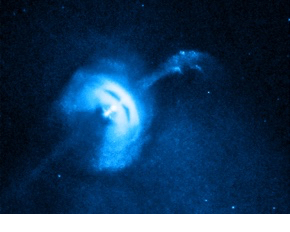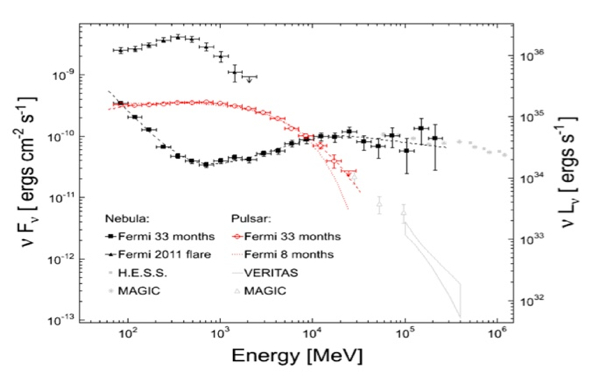Investigating Pulsar Wind Nebulae


Most of the spin-down luminosity of energetic, young pulsars is carried away in a magnetized wind of charged particles. This wind expands into the surrounding medium, decelerating as it sweeps up ejecta from the supernova and forming a termination shock. These pulsar wind nebulae (PWNe) contain both the relic accelerated particles from the pulsar and particles accelerated within the termination shock.

While PWNe are the dominant Galactic source class at TeV energies, to date few have been detected at GeV energies. In association with multi-frequency studies, Fermi provides new constraints on the emission models and physical processes occurring in the nebula (magnetic field, injection spectrum, pulsar efficiency).
Fermi's spectral coverage gives insight into an energy range where differences in spectral signature allow scientists to discriminate between low-mass particle (leptonic) and high-mass particle (hadronic) emission processes. LAT detections of gamma rays from electrons with TeV energies in PWNe can provide measurements of Inverse Compton emission from these sources. Many PWNe show an energy-dependent morphology indicative of such cooling mechanisms. To date, few PWNe have been identified by Fermi, in part due to presence of strong GeV emission from the central pulsar.
The Crab Nebula PWN: A Not So Standard Candle


The Crab nebula is a uniquely active PWN. Fermi detects emission from both the young pulsar and the surrounding nebula (in the off-pulse phase). Long held to be the standard candle of high-energy astrophysics, the Crab exhibited strong gamma-ray flares on time-scales as short as half a day, far smaller than the dynamical timescales in the nebula. The suspected radiation mechanism is synchrotron emission, which at 1 GeV requires γ ~ 3-10 x 109, making the Crab an active "PeVatron". + Learn More



